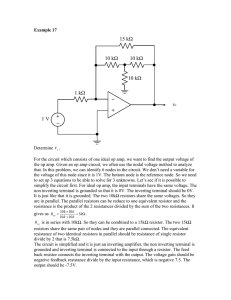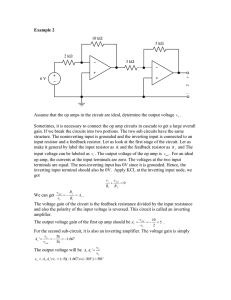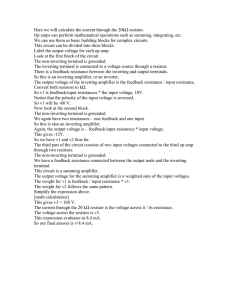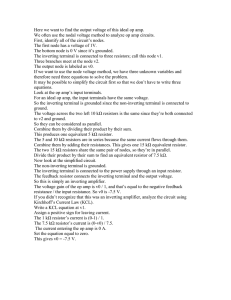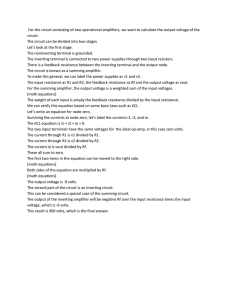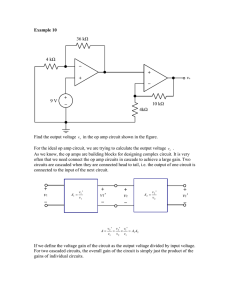_ + 1.8 kΩ 300 Ω
advertisement
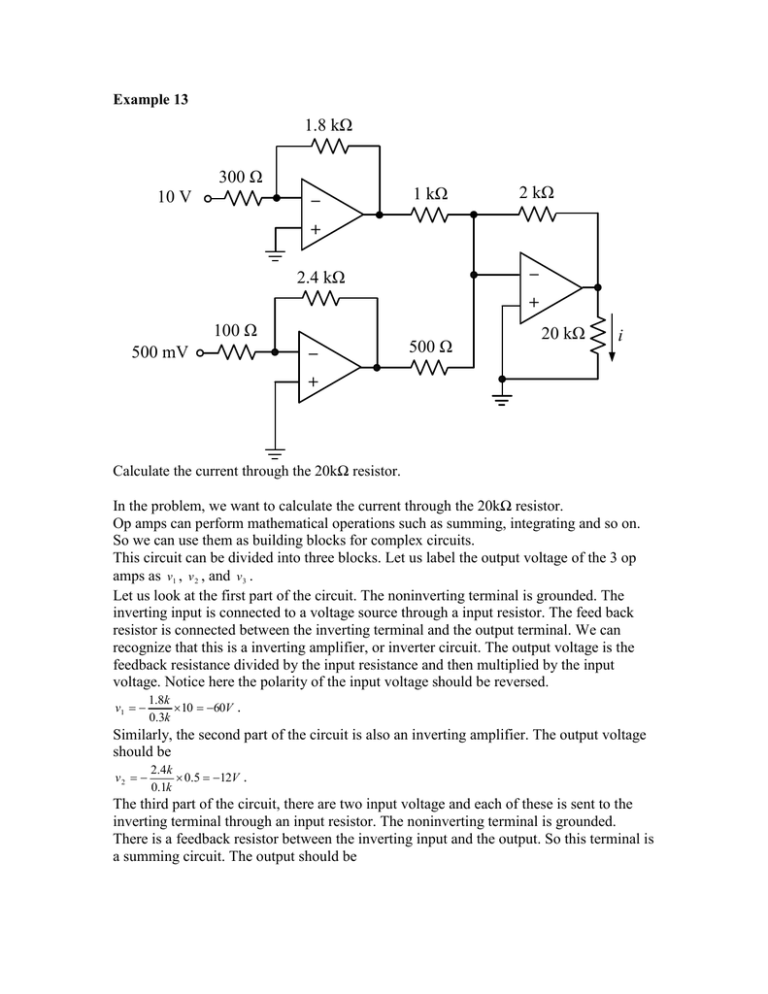
Example 13 1.8 kΩ 300 Ω _ 10 V 1 kΩ 2 kΩ + _ 2.4 kΩ + 100 Ω 500 mV _ 500 Ω 20 kΩ i + Calculate the current through the 20kΩ resistor. In the problem, we want to calculate the current through the 20kΩ resistor. Op amps can perform mathematical operations such as summing, integrating and so on. So we can use them as building blocks for complex circuits. This circuit can be divided into three blocks. Let us label the output voltage of the 3 op amps as v1 , v 2 , and v 3 . Let us look at the first part of the circuit. The noninverting terminal is grounded. The inverting input is connected to a voltage source through a input resistor. The feed back resistor is connected between the inverting terminal and the output terminal. We can recognize that this is a inverting amplifier, or inverter circuit. The output voltage is the feedback resistance divided by the input resistance and then multiplied by the input voltage. Notice here the polarity of the input voltage should be reversed. v1 1.8k 10 60V 0.3k . Similarly, the second part of the circuit is also an inverting amplifier. The output voltage should be v2 2. 4 k 0.5 12V 0.1k . The third part of the circuit, there are two input voltage and each of these is sent to the inverting terminal through an input resistor. The noninverting terminal is grounded. There is a feedback resistor between the inverting input and the output. So this terminal is a summing circuit. The output should be 2k 2k v 3 (60 ) (12 ) (120 48 ) 168V 0.5k 1k The current through the 20kΩ resistor should be i 168 8.4mA 20 k

